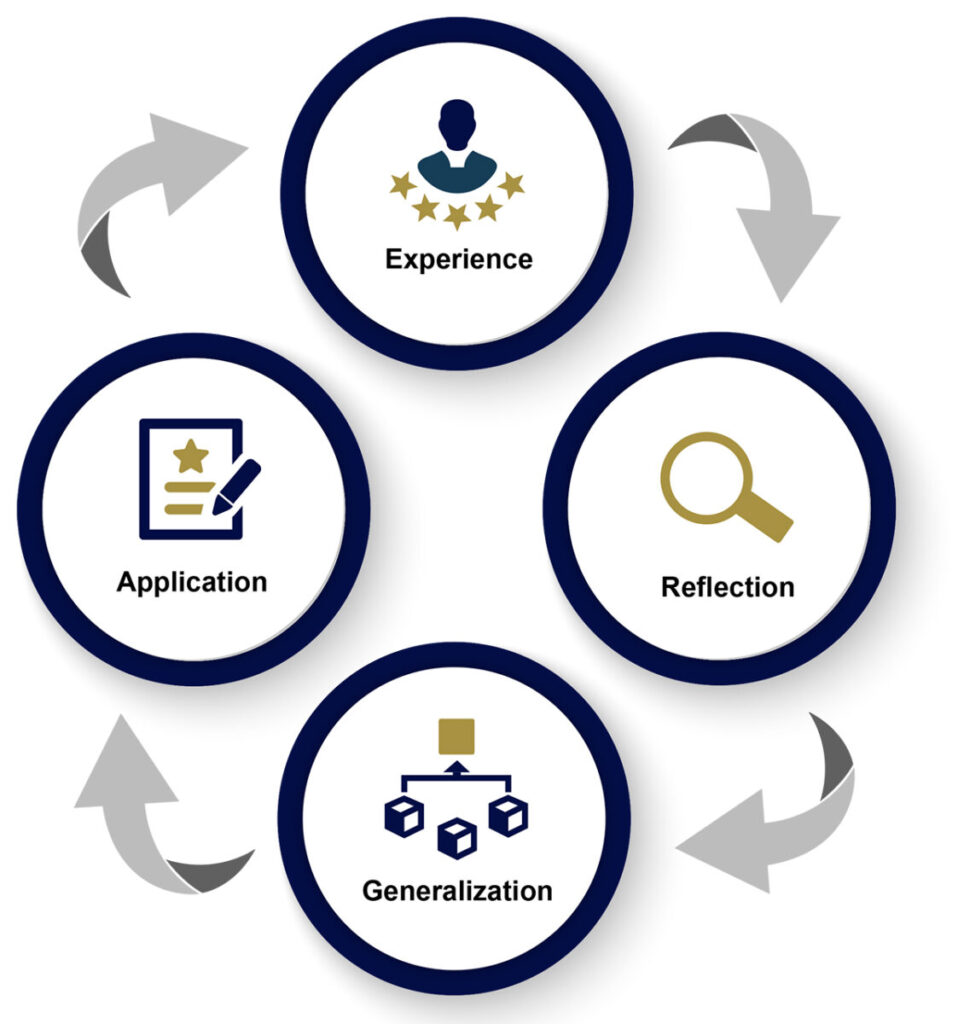What’s the trouble with Training? Nothing, except, for the fact that corporate training, is often, if not almost always, misunderstood, underappreciated, and overlooked!
Having been a training consultant for well over two decades to leaders at all levels in all verticals at top-tier organizations throughout North America, I have seen, first-hand, its triumphs and its vicissitudes from the trenches to the board room, with clients like Blackberry, Tangerine Bank and Canada’s Department of National Defense.
Let us start with misunderstood. Training needs a better name. We train our dogs to sit, our hair to relax its curl and our children to say, “please” and “thank you.” But in business, training has a much more onerous requirement. Developing an organization’s talent is a critical component of its success. Based upon a scientific model and through careful insight and concerted wisdom, training experts create opportunities for business leaders and their team members to change their behaviour to address myriad and often critical business requirements.
Foremost, business leaders must facilitate their team members to translate the organizational strategy to their day-to-day business practice. Full stop. And, I can tell you without equivocation, this exercise is rarely, if ever, successfully achieved in the world of work.
A Chief Learning Officer, should sit in the C-Suite with all the other “Cs;” Chief Executive Officer, Operating Officer, Chief Financial Officer, Chief Information Officer, and Chief Human Resources Officer so that a plan can be struck top-down to ensure the strategic plan, so critical to an organization’s success, is understood, adopted, and translated in everything employees do. Employee performance must be driven across the organization and only expertly created and expertly implemented training initiatives can accomplish this.
Wharton’s School of Business even confers an Executive Doctorate, Chief Learning Officer, the first of its kind in the world. This three-year Doctor of Education program “prepares corporate and non-profit learning and talent management leaders to be ‘scholar-practitioners’ who know how to develop and implement evidence-based practices that support formal and informal human capital, leadership, and skills development through on-demand, just-in-time, and longer-term learning and development initiatives.” A mouthful to be sure! Essentially, the program equips senior training leaders in five academic areas of Leadership, Learning, Business, Evidence, and Technology, to drive strategic behavior change throughout their organization.
Training should be sanctioned, supported, and given a profile by an organization’s senior-most leaders. In my entire career, I have seen this happen on only three occasions. I clearly recall the clients and can vouch for the outcome of the training initiatives. Exemplary! When employees hear from their President or CEO the importance of a particular training initiative (or better yet, if employees see their President or CEO attending and actively participating in strategic learning opportunities), they will certainly be more aligned with the call to action imbedded in the training initiative.
Training should be re-named (and, often it is) to better-reflect its significant impacts. Learning and development, learning and performance, leadership and development, talent development, business learning are more precise terms, yet even these may be lacking.
The Science of Training
Regardless of its moniker, all learning and development should be based upon a scientific model. I use Kolb’s Experiential Learning model, published by David A. Kolb in 1984. It works on two levels with a four-stage learning cycle and four distinct learning styles.
Kolb’s Experiential Learning Model
Adults do not learn well by being lectured to and then tested on their knowledge (a traditional pedagogical model).
Adults learn best when they are either given a learning opportunity in an in-person or virtual class setting or they are asked to recall a time when a certain experience occurred (experience). For example, an individual or group might be asked to remember a time when they coached an employee. Next, (reflection) they are asked to consider one or several questions about that experience. For example, they could be asked to work alone or in groups to consider “what worked in the coaching interaction,” “what was challenging in the coaching interaction,” and, “what they would do differently based upon their coaching experience.” Then, (generalization) the training facilitator would convene the group and collaboratively they would agree coaching best practices. In this example, these best practices may include elements like, “develop trust with the coaching client,” “use a proven coaching model,” “ask don’t tell,” and, “act collaboratively with the coaching client.” Finally, the training participant is asked to apply their learning real-time (either in the training setting or real-time on-the-job) and to reflect, take notes and be prepared to discuss outcomes at the next session. This is where the real learning starts.
Effective learning occurs when the learner progresses through the cycle and demonstrates relevant (observable and/or measurable) behavior change.
Measuring Training Outcomes
All training outcomes should be measured, and the measurements and means of measuring should be agreed in advance with the client and written into the training design and delivery.
The authority on training measurement was Donald Kirkpatrick who, in the 1950s created a globally recognized method of evaluating the results of training and learning programs. The Kirkpatrick model originally provided for the assessment of both formal and informal training methods and rated them against four levels of criteria: reaction, learning, behavior, and results.
The Kirkpatrick model has gone through several iterations and now has five levels:
Level 1– assesses participants’ reaction, satisfaction, and intention. This measurement, designed to be completed by participants immediately upon completing the training, is often affectionately referred to as ‘the happy sheet.’ Measurement is limited to how people felt about the learning experience and does not determine the likelihood of success in creating behaviour change.
Level 2 – assesses knowledge retention. It determines to what extent participants retained what they learned in the training scenario.
Level 3 – determines the learner’s application and implementation. This measurement is critical to understanding how an individual applies what they have learned back on the job.
Level 4 – addresses business impact; the extent to which business learning has translated to a positive business outcome.
Level 5 – a level more recently added, is Return on Investment. This level correlates the positive business outcome perceived from assessing Level 4 to the amount of monetary investment made in creating the training intervention.
Measuring the positive impact training has on participants and organizations (Levels 3, 4 and 5) remains among the biggest challenges to both creating the need for training in the first place and for justifying its impact in the second.
Typically, clients do not invest in completing Levels 4 and 5 and as a result these levels of measurement are seldom pursued. And, even when they are undertaken, the business impacts correlated directly to training and their consequent ROI can be tricky to prove scientifically.
This brings us to the other troubles with training, being underappreciated and overlooked. According to the adage, “If you can’t measure it…” in this case the thinking is, “it’s not worth the investment.” Historically, during tough economic times the first two budgets slashed are Marketing and Training. And, according to the lore, both budgets are even more critically important during wrenching economies, and therefore should not be eliminated.
The Importance of Training
“If your employees aren’t learning, you’re not leading,” according to a Forbes (January 2018) article. Its author maintains “there is a strong relationship between how much people learn on the job and how much they love their job”. But, according to the study, Are SMART Goals Dumb? only 42% of workers say they are always or frequently learning on the job while another 39% say they are never or rarely learning.
Instilling in employees the notion that learning, and development are critical requirements of the job is a primary responsibility of all leaders. The responsibility does not, however, end here. Leaders must also coach, support, and foster on-the-job learning opportunities and environments where employees can daily stretch their limits and demonstrate measurable results.
Statistics prove that companies which invest in training have a 24% higher profit margin and that the employee retention rate grows by 30-50% at companies with a potent training program, (Employee Training Statistics: Cost of Progress in 2022).
Despite training’s merits, experience demonstrates that there is still much to be done by leaders at all levels to ensure a culture of growth and learning and to equip their front-line leaders to manifest and support this culture.
The Future of Training
A Forbes (October 2022) article tells us that, in addition to the long-standing requirement for successful organizations to foster training and development, increasingly as AI subsumes our lives and all-things-business, organizations will have no choice but to up-skill and re–skill huge percentages of their workforces.
If this is true, how much should an organization spend on training? According to the 2017 State of the Industry report from the Association for Talent Development, organizations in the United States spend an average of $1,273 per employee for direct learning expenditures. This statistic will undoubtedly be low based upon current realities.
One way, among several, to calculate an organization’s annual training budget, is to use the following equation: Total yearly salary budget x 1-3% = Total Training Budget. (This calculation takes the total salary budget for the entire year and multiplies it by 1% to 3%. The 1% to 3% is what can be used to represent the size, industry, or other organization specifics).
Training Magazine (November 2022) provides the following:
| Company Size | Training Budget |
| Large | Increased from $17.5M in 2017 to $19.2M in 2022 |
| Mid-Size | Increased from $1.3M in 2021 to $1.5M in 2022 |
| Small | Increased from $341,505 in 2021 to $368,891 in 2022 |
All this is to say, while training may be misunderstood, underappreciated, and overlooked, to be done well it must follow a proven scientific model and the measurement of its results must be factored in to the initial design and taken at the end of the training.
Studies indicate employees have a healthy appetite to learn and grow on the job, the investment in learning and development should be up to 3% of an organization’s total yearly salary budget and a whopping $100 Billion was spent by US organizations in 2022 (according to Training magazine’s 2022 Training Industry Report).
So, what’s the trouble with that?







